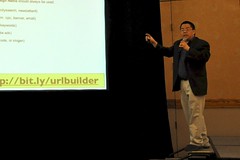 Do you ever ask these questions?
Do you ever ask these questions?
- What should I blog about?
- What should I be doing in social media?
- If I wanted to write a book, what should I write it about?
- How do I become a better public speaker?
If the answer is yes, then your next step is a webinar on the topic of your choice. Why? Webinars are absolutely incredible, amazing content platforms. Let me walk you through the process of how to squeeze the juice out of your webinar strategy.
Does your content suck?
Before you consider hitting the public speaking stage, a webinar is the fastest and easiest way to judge whether you’ve got anything worth saying. It’s super-low risk to you as a speaker – you can focus on content and delivery. It’s super-low risk to your audience, especially if it’s free, because it means no travel and expenses and no time out of the office besides an hour behind a closed door or in a conference room.
Conducting a webinar will tell you very graphically whether you’ve got anything worth listening to. Create a hashtag in your Webinar and monitor which items get retweeted and make a note of those. Answer questions and use those questions to diagnose parts of the presentation where you are unclear or fuzzy.
Trading up
Once you’ve conducted a few webinars and polished your presentation to the point where it’s valuable, record and publish it. Now you’ve got video on demand on your web site. Use this demo as part of your speaking kit so that conference organizers (particularly for smaller events) can judge that at least the content you’ll be presenting is worth hearing.
Polishing some more
Get in front of an audience? Good job. Record yourself and your audience as you speak and watch the recording to see what points resonate with people’s non-verbal body language. Applause and questions are two verbal metrics to watch, but look for people leaning back, nodding off, leaning forward, shifting to the edge of their seats, and scribbling furiously on a notebook to see where the juice is in your presentation.
Oh, and the recording of you, if it’s any good, can be edited and parlayed into more speaking opportunities that you can then use to keep refining your content and monitoring for feedback.
Breaking out
Let’s say you’ve got 50 slides in your presentation. I guarantee that audiences never truly capture the depth of meaning behind any one of them because you’re flinging a massive amount of information at them in a very short time. You could probably expound on any one slide at considerable length, providing supplementary notes, commentary, and additional resources for people to look at…
… which makes a great blog post for your blog. Guess what? That’s 50 blog posts – 5 weeks of Monday-Friday posts that are content rich for your blog. Commentary from readers of your blog will help you learn more about each slide in your presentation, helping you to refine it some more and be a better presenter.
Publishing
It takes no great leap of imagination to say that your 50 slides, now fully expanded, commented, and annotated makes for… a great eBook! Ask great commenters on your blog posts if you can include their commentary in the eBook as well, and you’ve got yourself a stellar piece of work that’s ready to be published and distributed electronically… and if it gets hot, really hot, you might even get a jingle from a dead tree publisher asking to turn your eBook into a full-length paper one.
This of course creates the virtuous cycle where you, as a published author, can now take your presentation to more events, get more feedback, refine it more, and make followup blog posts, some of which may include ideas for your next webinar… and the cycle continues.
Side plug: I just published my 21st Century Email Marketing webinar and I’m psyched about how nice it looks in Adobe Captivate. If you’re in the mood to see (or re-see) this event, hosted by Blue Sky Factory email marketing (my employer), check it out here. As you can guess based on what’s written above, you know what’s happening next with this material!
Did you enjoy this blog post? If so, please subscribe right now!



Get this and other great articles from the source at www.ChristopherSPenn.com! Want to take your conference or event to the next level? Book me to speak and get the same quality information on stage as you do on this blog.

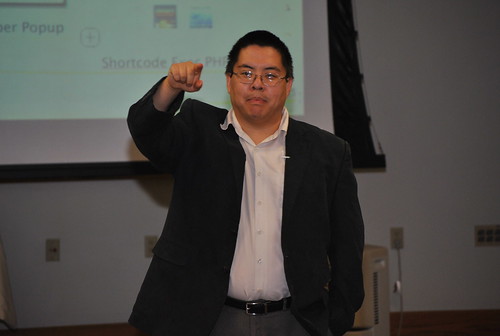
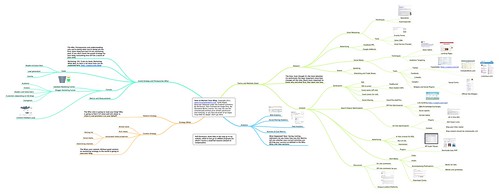



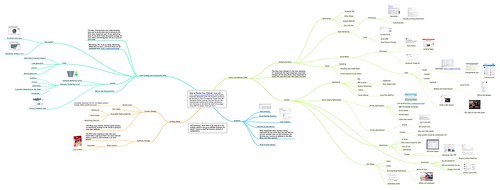
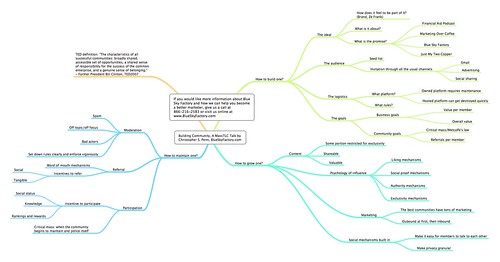





 Do you ever ask these questions?
Do you ever ask these questions?